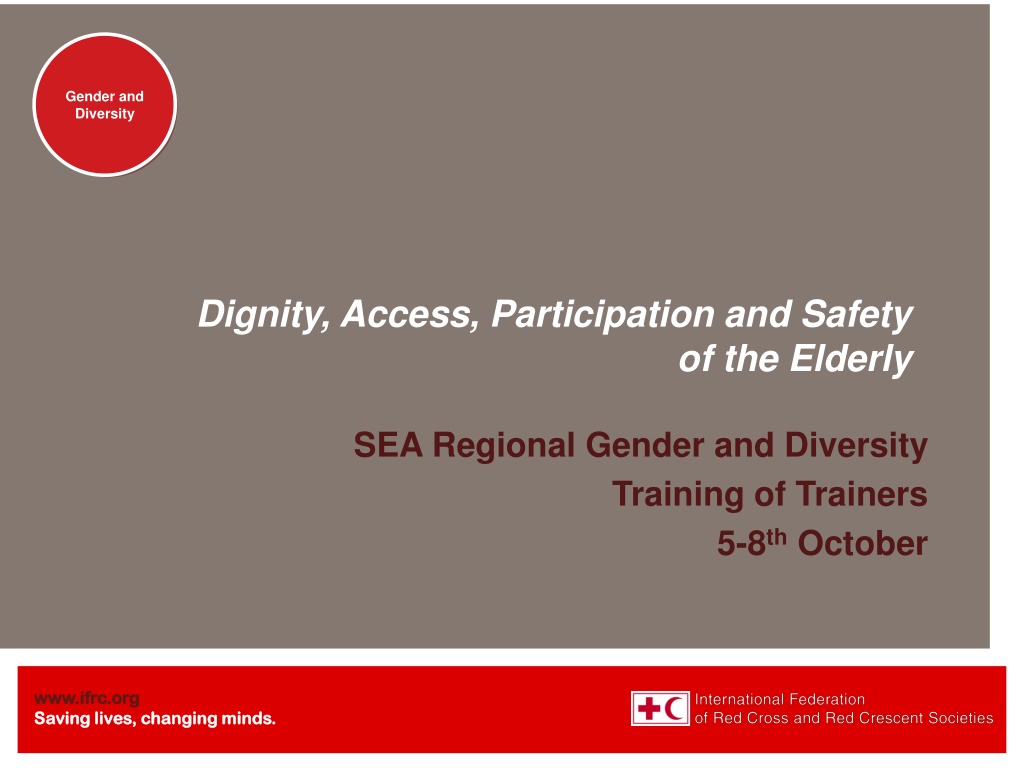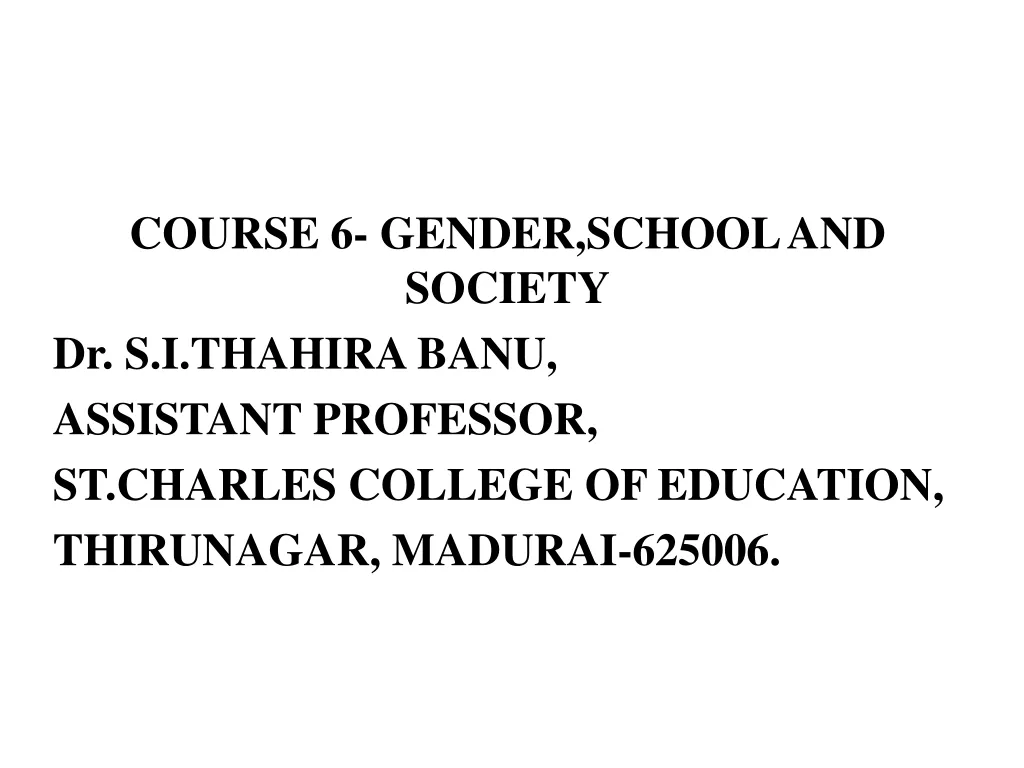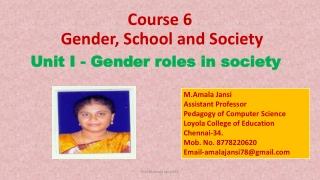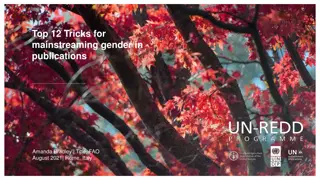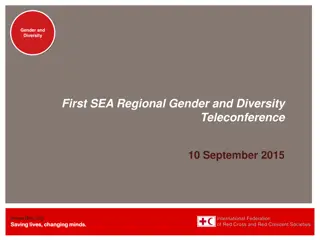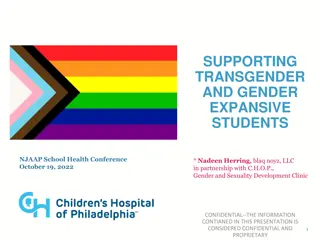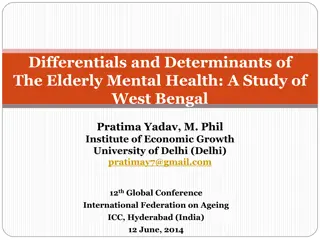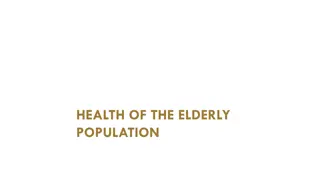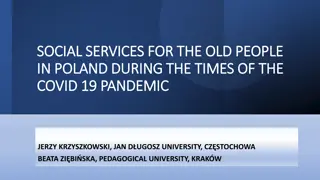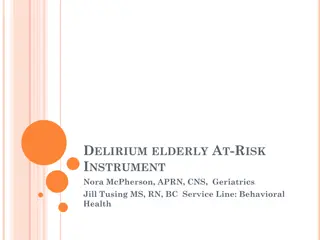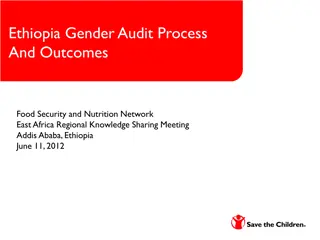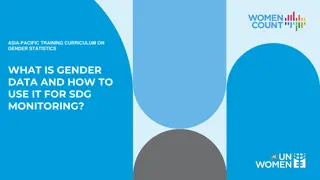Gender and Diversity Training for Elderly Safety
This content focuses on the vulnerabilities of elderly populations during disasters, exploring ways to enhance their participation in disaster management. Various factors affecting the elderly's safety and well-being are identified and discussed, emphasizing the importance of inclusive strategies to support this vulnerable group.
Download Presentation

Please find below an Image/Link to download the presentation.
The content on the website is provided AS IS for your information and personal use only. It may not be sold, licensed, or shared on other websites without obtaining consent from the author.If you encounter any issues during the download, it is possible that the publisher has removed the file from their server.
You are allowed to download the files provided on this website for personal or commercial use, subject to the condition that they are used lawfully. All files are the property of their respective owners.
The content on the website is provided AS IS for your information and personal use only. It may not be sold, licensed, or shared on other websites without obtaining consent from the author.
E N D
Presentation Transcript
Gender and Gender and Diversity Diversity Dignity, Access, Participation and Safety of the Elderly SEA Regional Gender and Diversity Training of Trainers 5-8th October www.ifrc.org www.ifrc.org Saving lives, changing minds. Saving lives, changing minds.
Session learning objectives Gender and Diversity By the end of the session, participants will be able to recognize the vulnerabilities and to identify the capacity of the elderlies to suggest ways in which the elderlies could participate in the disaster management program of the National Societies. 1. 2. www.ifrc.org www.ifrc.org Saving lives, changing minds. Saving lives, changing minds.
Aging populations Gender and Diversity In Southeast Asia, and globally there are a number of countries that have increasing aging populations. We know that disasters impact people in different ways and they will have different needs during and after an emergency. The elderly are one of the most vulnerable groups in disasters. www.ifrc.org www.ifrc.org Saving lives, changing minds. Saving lives, changing minds.
Gender and Diversity DOCUMENTARY PART 1 www.ifrc.org www.ifrc.org Saving lives, changing minds. Saving lives, changing minds.
Group Work Gender and Diversity 3 minutes discussions i. Vulnerabilities of the elderly in disaster ii. How they can contribute in Disaster Management 4 groups : choose a rapporteur from each group www.ifrc.org www.ifrc.org Saving lives, changing minds. Saving lives, changing minds.
Gender and Diversity DOCUMENTARY PART 2 www.ifrc.org www.ifrc.org Saving lives, changing minds. Saving lives, changing minds.
Main points from the documentary Gender and Diversity Vietnam 60 yrs old and above 10% of the population 73% - rural / isolated areas & no children or others to care for them. 65% of human loss during disasters. Japan Tsunami 70% of victims are elderlies www.ifrc.org www.ifrc.org Saving lives, changing minds. Saving lives, changing minds.
Vulnerability factors of the elderly during disasters Gender and Diversity There are a number of factors that increase the vulnerability of the elderly to disasters: Directions to the evacuation sites Could not withstand long term disaster Exclusion / isolated in rural areas www.ifrc.org www.ifrc.org Saving lives, changing minds. Saving lives, changing minds.
Vulnerability factors of the elderlies during disasters Gender and Diversity Older people get weaker and slower and are more likely to have complications with their health Older people may lack mobility, hearing, sight and are therefore would be more dependent on assistance Elderly people with disabilities, can be even more prone to vulnerabilities (this highlights another interaction between aspects of diversity) www.ifrc.org www.ifrc.org Saving lives, changing minds. Saving lives, changing minds.
Manners in which the elderlies can assist the community and the National Societies Gender and Diversity Resourcefulness due to years of experience Decision making Control of assets Community projects - Help in the evacuation activities - Transfer of food. Many may have lived through disasters before and understand the pattern of disasters Experience of building up effective coping strategies or survival systems during and after disasters www.ifrc.org www.ifrc.org Saving lives, changing minds. Saving lives, changing minds.
Manners in which the elderlies can assist the community and the National Societies Gender and Diversity Knowledge of traditional or alternative medicines, which can be vital to the development of the community In some communities the elderly may have control over household assets and therefore play a key role in building back livelihoods Elderly members of the community may be the main decision makers www.ifrc.org www.ifrc.org Saving lives, changing minds. Saving lives, changing minds.
What can we do ... Gender and Diversity Before a disaster, include the elderly in all disaster preparedness and disaster risk reduction activities e.g. mapping, analysis, planning, implementation and reporting Encourage staff and volunteers to view older people in the community as having capacities and develop processes to harness and build on these capacities After a disaster, ensure elderly people can access evacuation centers and that they can attend relief distribution points. It is important to make provisions to reduce barriers to this. www.ifrc.org www.ifrc.org Saving lives, changing minds. Saving lives, changing minds.
What can we do ... Gender and Diversity Important step to take during disaster - Assessment needs to be carried out - Elderlies need were not excluded before and during disaster . www.ifrc.org www.ifrc.org Saving lives, changing minds. Saving lives, changing minds.
Conclusion Gender and Diversity Elderlies are valuable part of the communities and National Societies One of the vulnerable groups that must not be neglected. They must be socially included in every phase from planning to implementation. They are assets of the community. www.ifrc.org www.ifrc.org Saving lives, changing minds. Saving lives, changing minds.
Gender and Diversity for Resilience Resource Library Gender and Diversity For internal and external resources on inclusion of the elderly in DRR/DM follow this link: Link: https://sites.google.com/site/ drrtoolsinsoutheastasia/gende r-and-diversity/gender-and- diversity-for-resilience- toolkit/building- resilience/disaster-risk- reduction-drr---disaster- management-dm www.ifrc.org www.ifrc.org Saving lives, changing minds. Saving lives, changing minds.
Gender and Diversity Any questions? www.ifrc.org www.ifrc.org Saving lives, changing minds. Saving lives, changing minds.
Gender and Diversity THANK YOU www.ifrc.org www.ifrc.org Saving lives, changing minds. Saving lives, changing minds.
FOR FURTHER INFORMATION ON GENDER AND DIVERSITY PLEASE CONTACT: IFRC GENDER AND DIVERSITY OFFICER, SOUTH EAST ASIA REGIONAL DELEGATION CHRISTINAHANEEF (christina.haneef@ifrc.org) THIS PRESENTATION IS PUBLISHED BY INTERNATIONAL FEDERATION OF RED CROSS AND RED CRESCENT SOCIETIES P.O. BOX 372 CH-1211 GENEVA 19 SWITZERLAND TEL.: +41 22 730 42 22 FAX.: +41 22 733 03 95
